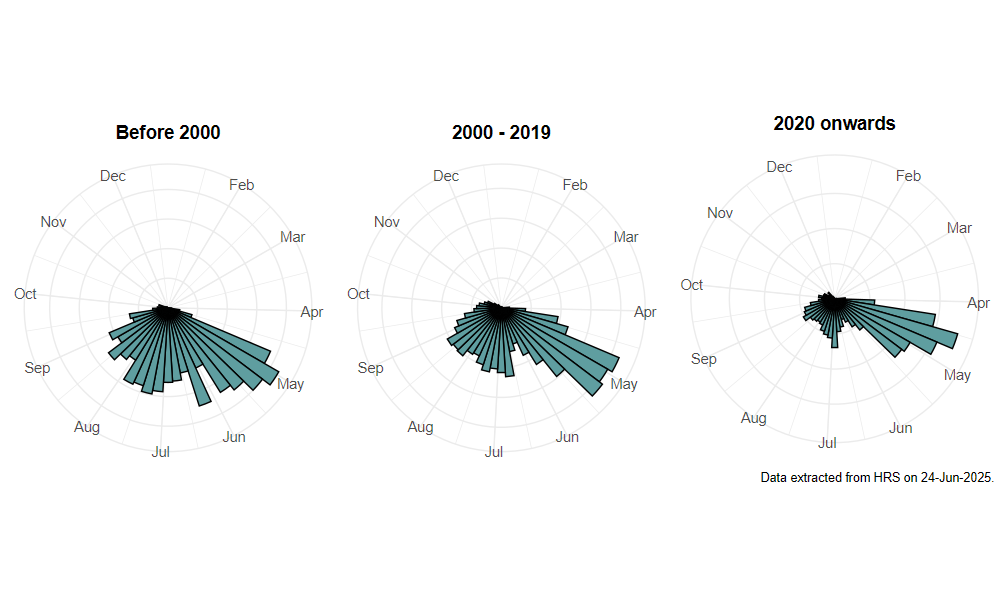Baccha elongata (Fabricius, 1775)
Identification
Identification difficulty = 1. ![]()
![]() according to Ball & Morris, 20241
according to Ball & Morris, 20241
Synonymy
In the past two species were recognised: B. elongata and B. obscuripennis. They were separated on small variations in dusting and the male genitalia. They are now synonymised under B. elongata.
Biology
This small, elongate, narrow-waisted species is very distinctive and is most frequently seen hovering low down amongst vegetation in shade or dappled sunshine. It particularly favours nettle beds in humid situations where females can be found ovipositing. The larva is a predator of a variety of ground layer aphids. Adults can be found basking on leaves, but not often at flowers. Flies from May through to the Autumn, but is most frequent in May.
Flight period
The following plots show the number of unique records per week excluding those reported to be of immature stages.

Distribution
Widespread in wooded districts. Typically found along woodland rides or margins, along hedgerows and in parks and larger gardens. It is scarce or absent from areas that lack shelter such as the fens and areas of sheep grazed upland.

Trends
The following plots show the Frescalo TFactor vs year and a map of the rescaled frequency (all records) for the species.
-
Ball, S., & Morris, R. (2024). Hoverflies of Britain and Ireland. WILDGuides (3rd ed.). Oxford: Princeton University Press. ↩